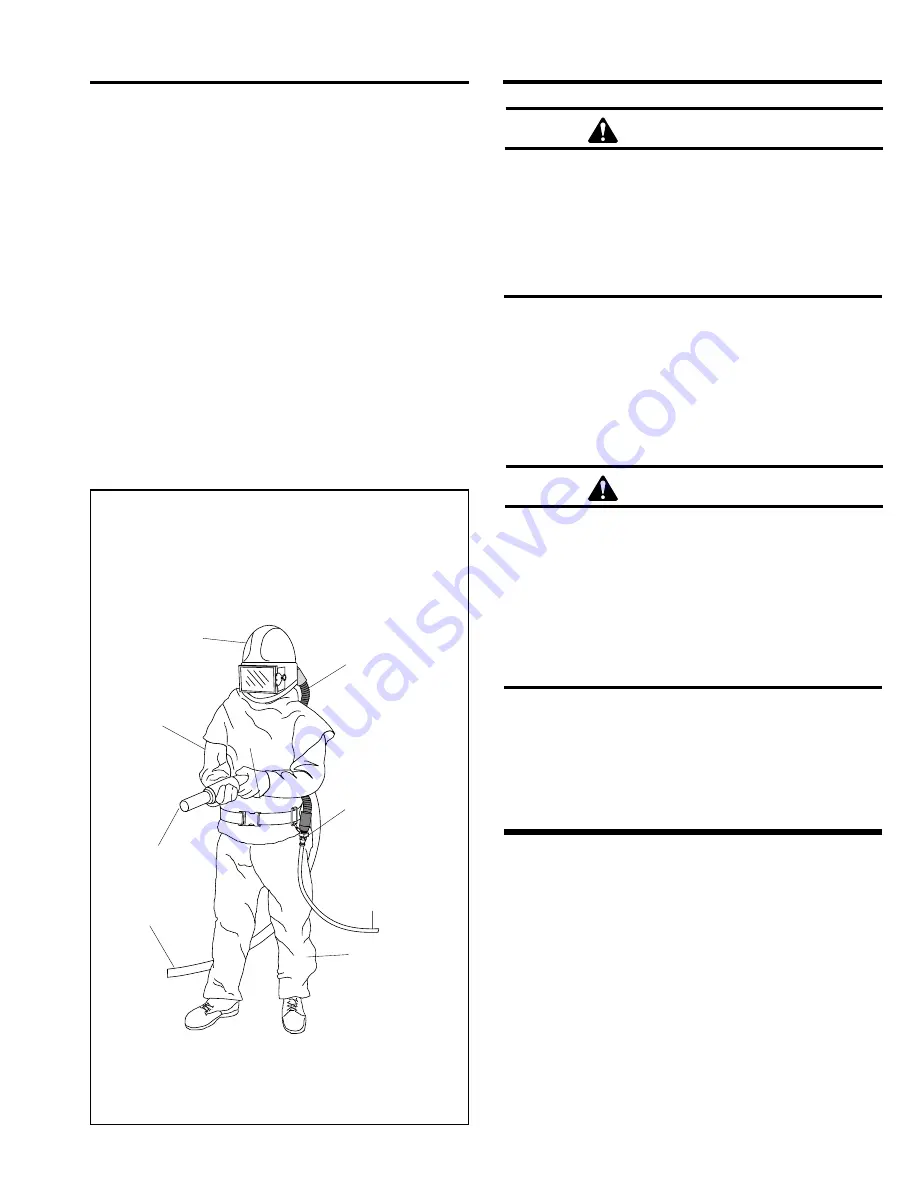
APOLLO 20 LP SUPPLIED-AIR RESPIRATOR
Page 4
1.6.3
Face: The Apollo 20 inner lens meets impact and
penetration requirements under ANSI Z87.1-1989.
1.6.4
Eyes: Apollo respirators do not provide primary
eye protection. Wear approved eye protection with the
respirator.
1.6.5
Hearing: Noise generated by the Apollo respirator
and measured inside the helmet do not exceed 80 deci-
bels. (42 CFR part 84.140) When any exterior noise
causes the internal noise level to exceed 80 decibels, the
user must wear additional hearing protection. A variety of
hearing protectors can be worn with the respirator.
1.7
Description
1.7.1
The Clemco Apollo 20 Supplied-Air Respirator is
approved by the National Institute of Occupational Safety
and Health (NIOSH).
WARNING
OSHA/NIOSH approval applies only when this
supplied-air respirator is used as a complete
system. Do not make any non-approved modifi-
cation, deletion, or substitution. Non-approved
components voids the NIOSH approval and may
permit ingress of toxic and hazardous dust, and
result in toxic poisoning and respiratory disease.
1.7.2
The respirator comes with a Constant-Flow Con-
nector assembly, that connects the respirator hose to the
breathing tube.
1.7.3
The respirator is designed for use with ambient air
pumps only, that deliver 6 to 15 cfm within the approved
pressure range as noted in the table in Section 4.2.2.
WARNING
Do not supply compressed air to this respirator.
Air from compressors pose hazards, especially
from carbon monoxide that are not included in
these instructions. Compressors used for breath-
ing air require safety and monitoring devices that
are not included in these instructions. Using
compressors that are not suitable for breathing
air could result in death. Reference OSHA Regu-
lations 1910.134(d) and 1910.94(6).
1.7.4
High Pressure Conversion Kit: This optional ac-
cessory kit contains parts and instructions to convert the
Apollo 20 LP (respirator for use with ambient air pump), to
Apollo 20 HP (respirator for use with Grade “D” Com-
pressed Air). The kit is listed in Section 10.1.
2.0
INSPECTION
NOTE: A Clemco respirator hose must be used with the
Apollo Respirator. If one is not available, it must be ordered
from an authorized distributor of Clemco products. Hoses
are not included with respirators, because blast operators
often are assigned personal respirators, while using com-
mon respirator hoses.
2.1
Component Checklist
2.1.1
Make sure that all the respirator components are
present. Each respirator box should contain the following:
Figure 1.
Apollo 20
Supplied-Air
Respirator
Respirator
Hose to Ambient
Air Source
Blast
Suit
Blast Suit
Gloves
Constant Flow
Connector
Nozzle and
Nozzle Holder
Blast Hose
Breathing-Air
Tube Assembly
General Arrangement
of
Operator Safety and Comfort Components



















